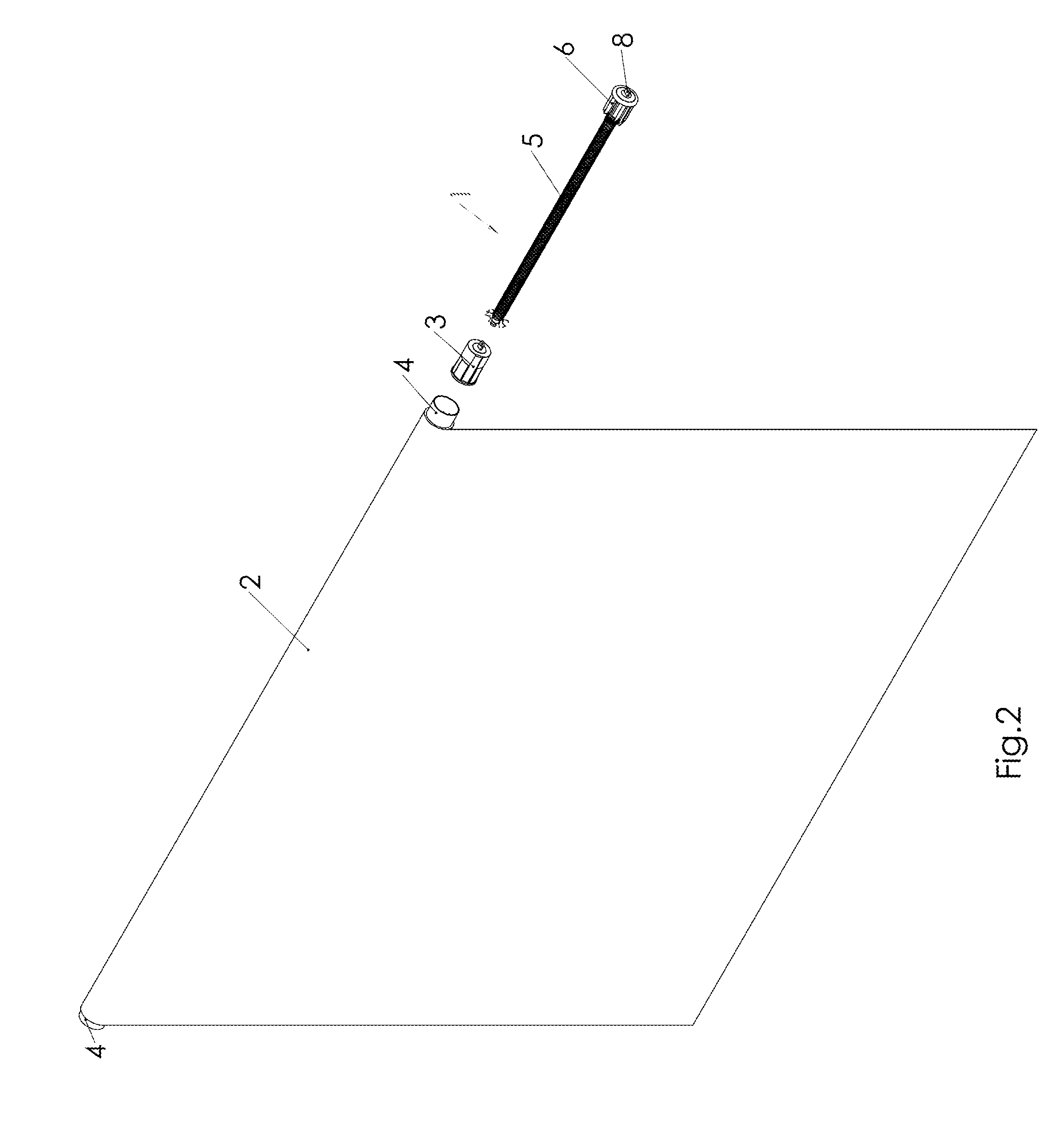Roller shade with a brake
- Summary
- Abstract
- Description
- Claims
- Application Information
AI Technical Summary
Benefits of technology
Problems solved by technology
Method used
Image
Examples
first embodiment
[0032]FIG. 1 presents generally the roller shade of the invention. The roller shade of the invention comprises at least such components as a shade 2, a tube-like shaft 4, a spring mechanism 1 and a brake 3.
[0033]The shade 2, which term here is used to describe the fabric part of the roller shade of e.g. cotton or polyester, can be wound or rolled around the shaft 4 in an upper position and be lowered in a lowered position. In FIG. 1, the shade 2 is partly wound up. The lower edge of the shade part 2 often has a bottom bar or some handle attached directly to the bar or a cord with a tassel to facilitate the lowering (not shown).
[0034]The spring mechanism 1, which in FIG. 1 is shown separately from the roller shade, is in reality inside the shaft 4 of the shade and it includes a rod 5 around which is fitted a spiral torsion spring (cannot be seen in FIG. 1). The spring is fixed with fastening means 6 that rotates with the shaft 4 and work as a bearing. The end of the rod 5 is availabl...
second embodiment
[0038]FIG. 2 presents generally the roller shade of the invention, wherein the spring mechanism 1 and the eddy current brake 3 are at the same end of the shaft 4 of the roller shade.
[0039]FIG. 3 is a detailed assembly illustration of the eddy current brake 3 used in the invention in parts. The eddy current brake 3 comprises a magnetic core 9 that consists of narrow perpendicularly magnetized discs 10 of permanent magnets glued around a first steel tube 11 being alternately placed with respect to their polarity (+up and down). The brake force can be adjusted by means of the length of the discs 10. The brake is more powerful the longer the discs 10 are. The magnetic force needed and the size of the magnets can be mathematically calculated when the force of the spring mechanism 1, the diameter of the shaft 4 and the desired raising speed of the shade is known.
[0040]There are slots 12 in both end of the first steel tube 11 to which round-shaped end plates 13, 14 of hard and slippery pla...
PUM
 Login to View More
Login to View More Abstract
Description
Claims
Application Information
 Login to View More
Login to View More - R&D
- Intellectual Property
- Life Sciences
- Materials
- Tech Scout
- Unparalleled Data Quality
- Higher Quality Content
- 60% Fewer Hallucinations
Browse by: Latest US Patents, China's latest patents, Technical Efficacy Thesaurus, Application Domain, Technology Topic, Popular Technical Reports.
© 2025 PatSnap. All rights reserved.Legal|Privacy policy|Modern Slavery Act Transparency Statement|Sitemap|About US| Contact US: help@patsnap.com



